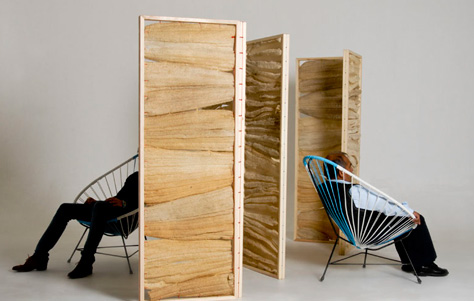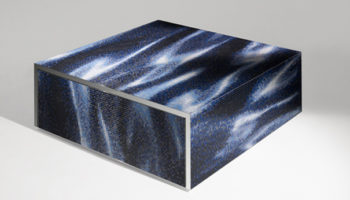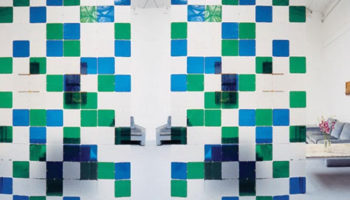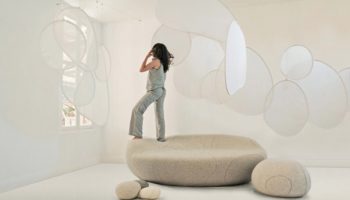Good Enough to Eat: Lufa By Fernando Laposse
Most of us are familiar with loofah (also known as ‘luffa’ or ‘lufah’) because the dried fruit is used to create exfoliating bath sponges. Oddly porous and uniquely textured, loofah has its own aesthetic charm, beyond its typical bathtime use. It also has other uses in different cultures: in Asia and Africa, the unripe fruit of loofah is harvested and eaten as a vegetable. Rather large, oblong, and tubular, loofahs are the chosen material for a unique room divider known as Lufa designed by Fernando Laposse.
Lufa. Designed by Fernando Laposse.
Sustainable Room Divider Made of Loofah

Stretched out and lined up within a bi-fold wooden frame, the loofahs of Lufa take on new meaning. Mexican designer Fernando Laposse, who lives and works in London, reinvented the material by placing it in an inventive and functional format. As a room divider, Lufa offers privacy while also providing light. The Lufa screen filters light just enough.

Thanks to the porous nature of loofah, the Lufa screen is also incredibly lightweight. This feature makes Lufa a great solution for multi-functional living and working spaces. Move the screen to where you need privacy—behind your desk while working, alongside your bed while sleeping. Of course, the main allure of Lufa is its intoxicating texture, which reminds me of the moon’s craters and a caterpillar’s bristles all at once.

Via Inhabitat.
About the Designer: A graduate of Central Saint Martins University of the Arts, Fernando Laposse has created a suite of products using loofah, including a room divider and desk. Laposse is interested in sustainable design: in 2009, he carried out research to see if it would be possible to reuse steam energy from old dry cleaning stores, since “the steam is still being exhausted through pipes directly onto the sidewalks in Mexico City.”




Leave a Reply